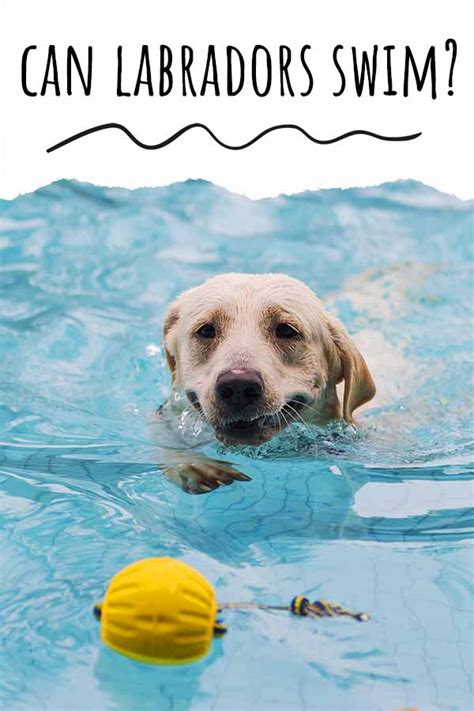
A rescued rabbit named Hazel, traumatized and fearful after being found abandoned in a park, has formed an unlikely but heartwarming bond with a German Shepherd named Boone, providing her with comfort and companionship at her foster home in Oklahoma City. Boone’s gentle nature and constant presence have helped Hazel overcome her initial anxiety, transforming her into a confident and affectionate bunny.
OKLAHOMA CITY – When Hazel, a small rabbit, arrived at her foster home with Best Friends Pet Adoption in Oklahoma City, she was scared, skittish, and deeply traumatized. Discovered abandoned in a local park, the rabbit was hesitant to trust humans or engage with her surroundings. Fortunately, Hazel found an unexpected source of solace and healing: a fluffy, black German Shepherd named Boone.
Boone, the resident dog at Hazel’s foster home, immediately took an interest in the fragile bunny. Boone approached Hazel with a gentle curiosity, initiating a bond that would prove transformative for the rescued rabbit. Instead of displaying predatory behavior, Boone showed remarkable patience and care, offering Hazel a sense of security she desperately needed.
“When Hazel first came to us, she was just terrified,” said Allison Seelig, Hazel’s foster parent through Best Friends Pet Adoption. “She wouldn’t come out of her cage, wouldn’t eat, and would just tremble. It was heartbreaking to see her so scared.”
Boone’s presence, however, started to make a noticeable difference. He would lie near Hazel’s cage, offering a comforting presence without being intrusive. Soon, Hazel began to venture out of her cage, drawn by Boone’s calm demeanor. Over time, the two formed a deep connection, often found snuggling together or grooming each other.
“Boone has this innate ability to sense when an animal is in need,” Seelig explained. “He just knew Hazel needed a friend, and he stepped up in the most amazing way. It’s like he knew exactly what she needed.”
The story of Hazel and Boone has touched many hearts, highlighting the remarkable capacity of animals to heal and comfort one another. Best Friends Pet Adoption uses heartwarming stories like Hazel’s to raise awareness about the importance of pet adoption and the profound impact that companionship can have on rescued animals.
Hazel’s Journey to Recovery
Hazel’s journey to recovery underscores the challenges faced by rescued animals, especially those who have experienced abandonment or neglect. When animals are rescued from difficult situations, they often arrive with emotional and psychological scars that can take considerable time and patience to heal. Hazel’s initial fear and anxiety were typical reactions for a rabbit who had been abandoned, leaving her feeling vulnerable and insecure.
Providing a safe and supportive environment is crucial for the rehabilitation of rescued animals. In Hazel’s case, her foster home offered a calm and stable setting where she could gradually learn to trust again. The presence of other animals, particularly those with a gentle and nurturing nature, can also play a vital role in the healing process.
Boone’s role in Hazel’s recovery was particularly significant. His calm and non-threatening behavior helped Hazel to feel safe and secure. By offering her companionship and affection, Boone provided Hazel with a sense of stability and reassurance that she desperately needed.
The Power of Interspecies Bonds
The bond between Hazel and Boone is a testament to the power of interspecies relationships. While it is not uncommon for dogs and rabbits to coexist peacefully, the depth of connection between Hazel and Boone is truly remarkable. Their story illustrates that animals of different species are capable of forming deep and meaningful bonds, providing each other with companionship, comfort, and support.
Interspecies friendships can be particularly beneficial for animals who have experienced trauma or loss. The presence of a non-judgmental companion can help to alleviate feelings of loneliness and anxiety, promoting emotional healing and well-being. These bonds often defy preconceived notions about animal behavior, showcasing the capacity for empathy and compassion that exists across species.
Numerous studies have shown that interspecies interactions can have positive effects on animal behavior. For example, research has found that dogs who live with cats are often more social and less aggressive towards other animals. Similarly, cats who have canine companions may be less likely to exhibit territorial behaviors.
Best Friends Pet Adoption: A Haven for Rescued Animals
Best Friends Pet Adoption is a leading animal welfare organization dedicated to saving the lives of homeless pets. With adoption centers and programs across the country, Best Friends works to find loving homes for animals in need and to promote humane treatment of all animals.
The organization’s Oklahoma City location played a crucial role in Hazel’s rescue and rehabilitation. By providing her with a safe foster home and access to medical care, Best Friends gave Hazel the opportunity to heal and thrive. The organization also recognized the importance of Boone’s role in Hazel’s recovery and celebrated their unique bond.
Best Friends Pet Adoption relies on the support of volunteers and donors to carry out its mission. Foster parents like Allison Seelig provide temporary homes for rescued animals, offering them the care and attention they need to recover and prepare for adoption. Donations help to cover the costs of medical care, food, and other essential supplies.
The Broader Impact of Animal Companionship
The story of Hazel and Boone highlights the broader impact that animal companionship can have on human well-being. Studies have shown that interacting with animals can reduce stress, lower blood pressure, and improve mood. Animals provide companionship, emotional support, and a sense of purpose, all of which can contribute to a happier and healthier life.
For many people, pets are considered members of the family. They offer unconditional love and acceptance, providing a sense of connection that can be especially important for those who live alone or who are struggling with mental health issues. The simple act of petting an animal can release endorphins, which have mood-boosting and pain-relieving effects.
Animal-assisted therapy is a growing field that utilizes the therapeutic benefits of human-animal interaction to address a variety of physical, emotional, and cognitive challenges. Trained therapy animals are used in hospitals, nursing homes, schools, and other settings to provide comfort, support, and motivation to individuals in need.
Raising Awareness About Pet Adoption
One of the key goals of Best Friends Pet Adoption is to raise awareness about the importance of pet adoption. Millions of animals enter shelters each year, many of whom are healthy, friendly, and deserving of a loving home. By choosing to adopt a pet, individuals can save a life and make a positive impact on their community.
Adopting a pet is often more affordable than buying from a breeder or pet store. Adoption fees typically cover the costs of vaccinations, spaying/neutering, and microchipping, which can save adopters hundreds of dollars in veterinary expenses. Additionally, adopted pets are often already house-trained and socialized, making the transition to a new home easier.
Best Friends Pet Adoption and other animal welfare organizations work tirelessly to promote adoption and reduce the number of animals in shelters. They host adoption events, provide educational resources, and partner with local businesses to raise awareness and find homes for animals in need.
The Future for Hazel
Thanks to Boone’s unwavering support and the care provided by Best Friends Pet Adoption, Hazel has made remarkable progress in her recovery. She is now a confident and affectionate bunny who enjoys exploring her surroundings and interacting with her human and animal companions.
Hazel is currently available for adoption and is seeking a loving home where she can continue to thrive. Best Friends Pet Adoption is committed to finding the perfect match for Hazel, ensuring that she goes to a home where she will be safe, happy, and well-cared for.
Hazel’s story serves as an inspiration to others, demonstrating the resilience of animals and the power of compassion. Her journey from a frightened and traumatized rabbit to a confident and loving companion is a testament to the transformative impact that kindness and companionship can have on the lives of rescued animals. As for Boone, he continues to be a shining example of interspecies friendship, proving that love and compassion know no boundaries.
The Role of Foster Care in Animal Rescue
Hazel’s story also emphasizes the vital role that foster care plays in animal rescue. Foster homes provide a temporary safe haven for animals who are not yet ready for adoption, whether due to medical needs, behavioral issues, or simply a lack of space in shelters. Foster parents provide the care, attention, and socialization that these animals need to heal and prepare for their forever homes.
Foster care offers numerous benefits for both the animals and the foster parents. For the animals, it provides a less stressful environment than a shelter, allowing them to recover from illness or injury, learn basic manners, and socialize with humans and other animals. For the foster parents, it offers the opportunity to make a meaningful difference in the life of an animal, providing them with love and support during a critical time.
Best Friends Pet Adoption relies heavily on foster homes to care for rescued animals. The organization provides foster parents with all the necessary supplies and support, including food, medical care, and training. In return, foster parents agree to provide a safe and loving home for the animal until it is adopted.
The Importance of Responsible Pet Ownership
Hazel’s story also underscores the importance of responsible pet ownership. Abandoning an animal is not only cruel but also illegal in many jurisdictions. Responsible pet owners are committed to providing their animals with a lifetime of care, including food, water, shelter, medical care, and socialization.
Before bringing a pet into their home, potential owners should carefully consider whether they have the time, resources, and commitment to provide adequate care for the animal. They should also research the specific needs of the species and breed they are considering, to ensure that they can meet the animal’s physical and emotional requirements.
Responsible pet ownership also includes spaying or neutering pets to prevent unwanted litters. Millions of animals are euthanized in shelters each year due to overpopulation, and spaying or neutering is the most effective way to reduce the number of homeless animals.
The Ongoing Need for Animal Welfare Efforts
Hazel’s story is just one example of the many animals who are in need of rescue and care. Animal welfare organizations around the world are working tirelessly to combat animal cruelty, neglect, and abandonment. These organizations rely on the support of volunteers, donors, and advocates to carry out their mission.
Individuals can support animal welfare efforts in a variety of ways, including volunteering at a local shelter, donating to an animal welfare organization, advocating for animal-friendly legislation, and educating others about responsible pet ownership. Every act of kindness, no matter how small, can make a difference in the lives of animals.
Hazel and Boone’s story is a reminder that animals are capable of forming deep and meaningful bonds, and that they deserve our love, respect, and protection. By supporting animal welfare efforts and promoting responsible pet ownership, we can create a more compassionate world for all animals.
The Psychological Impact of Abandonment on Rabbits
Rabbits, being prey animals, are particularly susceptible to stress and anxiety when abandoned. Their natural instincts are geared towards survival, and being left alone in an unfamiliar environment can trigger a profound sense of fear and vulnerability. This fear can manifest in various ways, including:
- Hiding: Abandoned rabbits will often seek out enclosed spaces to hide, such as under bushes, in burrows, or behind objects. This behavior is a natural defense mechanism to avoid predators and feel safe.
- Reduced Appetite: Stress can significantly impact a rabbit’s appetite. They may refuse to eat or only nibble at food, leading to weight loss and nutritional deficiencies.
- Lethargy: A frightened rabbit may become lethargic and inactive, conserving energy to cope with the stressful situation. They may spend most of their time huddled in a corner, showing little interest in their surroundings.
- Aggression: While rabbits are generally docile animals, fear can sometimes trigger aggression. They may bite, scratch, or kick if they feel threatened or cornered.
- Teeth Grinding: Rabbits often grind their teeth when they are in pain or distress. This behavior is a sign of discomfort and should be addressed by a veterinarian.
The psychological trauma of abandonment can have long-lasting effects on a rabbit’s behavior and well-being. It may take considerable time and patience for them to overcome their fear and learn to trust humans again. A supportive and nurturing environment is essential for their recovery.
The Importance of Enrichment for Rescued Rabbits
Providing enrichment is crucial for the well-being of rescued rabbits. Enrichment refers to the provision of stimulating activities and objects that encourage natural behaviors and prevent boredom. Enrichment can help to reduce stress, improve mental health, and promote physical activity. Some effective enrichment strategies for rescued rabbits include:
- Toys: Provide a variety of toys, such as chew toys, balls, and tunnels. These toys can help to keep rabbits entertained and prevent them from chewing on inappropriate objects.
- Foraging Opportunities: Hide food in different locations to encourage foraging behavior. You can use puzzle feeders, treat balls, or simply scatter food around their enclosure.
- Social Interaction: Rabbits are social animals and benefit from interaction with other rabbits or humans. Spend time petting, grooming, and playing with your rabbit.
- Hiding Places: Provide plenty of hiding places, such as cardboard boxes, tunnels, and blankets. These hiding places will allow your rabbit to feel safe and secure.
- Variety: Rotate toys and enrichment items regularly to keep your rabbit interested and engaged.
By providing enrichment, you can help rescued rabbits to overcome their fear and anxiety and live happier, healthier lives.
Understanding German Shepherd Behavior with Small Animals
German Shepherds are known for their intelligence, loyalty, and protective instincts. While they are generally good-natured dogs, their behavior towards small animals can vary depending on their individual temperament, training, and socialization.
Some German Shepherds have a strong prey drive, which can make them inclined to chase or even harm small animals. However, with proper training and socialization, most German Shepherds can learn to coexist peacefully with rabbits and other small pets.
Early socialization is crucial for teaching German Shepherds how to interact appropriately with small animals. Exposing puppies to rabbits and other small pets in a positive and controlled manner can help them to develop a tolerance and even a fondness for them.
Training can also play a significant role in shaping a German Shepherd’s behavior towards small animals. Teaching commands such as “leave it” and “stay” can help to prevent them from chasing or harassing rabbits.
It is important to supervise interactions between German Shepherds and small animals, especially in the early stages of their relationship. Never leave them alone together unattended until you are confident that they can coexist peacefully.
Boone’s exceptional behavior towards Hazel is a testament to his gentle nature and the care he has received from his owners. His story highlights the importance of responsible dog ownership and the positive impact that training and socialization can have on a dog’s behavior.
The Long-Term Considerations of Adopting a Rescued Rabbit
Adopting a rescued rabbit is a rewarding experience, but it also requires a long-term commitment. Rabbits can live for 8-12 years or even longer, so it is important to be prepared to provide them with a lifetime of care. Some important considerations for adopting a rescued rabbit include:
- Housing: Rabbits need a spacious and secure enclosure, both indoors and outdoors. The enclosure should be large enough for them to hop, run, and stand on their hind legs.
- Diet: Rabbits require a high-fiber diet consisting primarily of hay, fresh vegetables, and a small amount of pellets. It is important to avoid sugary treats and processed foods.
- Veterinary Care: Rabbits require regular veterinary checkups to ensure that they are healthy and free from disease. They may also need vaccinations and parasite control.
- Grooming: Rabbits need to be groomed regularly to prevent matting and hairballs. Long-haired breeds require more frequent grooming than short-haired breeds.
- Companionship: Rabbits are social animals and benefit from companionship with other rabbits or humans. If you cannot provide a rabbit with a companion, you should spend plenty of time interacting with them each day.
By carefully considering these long-term considerations, you can ensure that you are prepared to provide a rescued rabbit with a loving and fulfilling home.
Frequently Asked Questions (FAQ) about Hazel and Boone’s Story:
-
How did Hazel end up being rescued?
- Hazel was found abandoned in a park in Oklahoma City. According to Allison Seelig, her foster parent, Hazel arrived at Best Friends Pet Adoption terrified and hesitant to trust anyone.
-
What made Boone, the German Shepherd, bond with Hazel?
- Boone possesses an “innate ability to sense when an animal is in need,” as described by Seelig. He approached Hazel gently and offered her a comforting presence, which helped her overcome her initial fear and anxiety.
-
What is Best Friends Pet Adoption’s role in this story?
- Best Friends Pet Adoption provided Hazel with a foster home and medical care, enabling her recovery. They also use stories like Hazel’s to promote pet adoption and highlight the impact of companionship on rescued animals.
-
Is Hazel available for adoption, and what kind of home is she looking for?
- Yes, Hazel is currently available for adoption. Best Friends Pet Adoption is seeking a loving home where she can continue to thrive, be safe, happy, and well-cared for.
-
Why is interspecies bonding important for rescued animals like Hazel?
- Interspecies friendships, like the one between Hazel and Boone, can provide emotional support and alleviate feelings of loneliness and anxiety, especially for animals who have experienced trauma or loss. These bonds can promote emotional healing and well-being.









